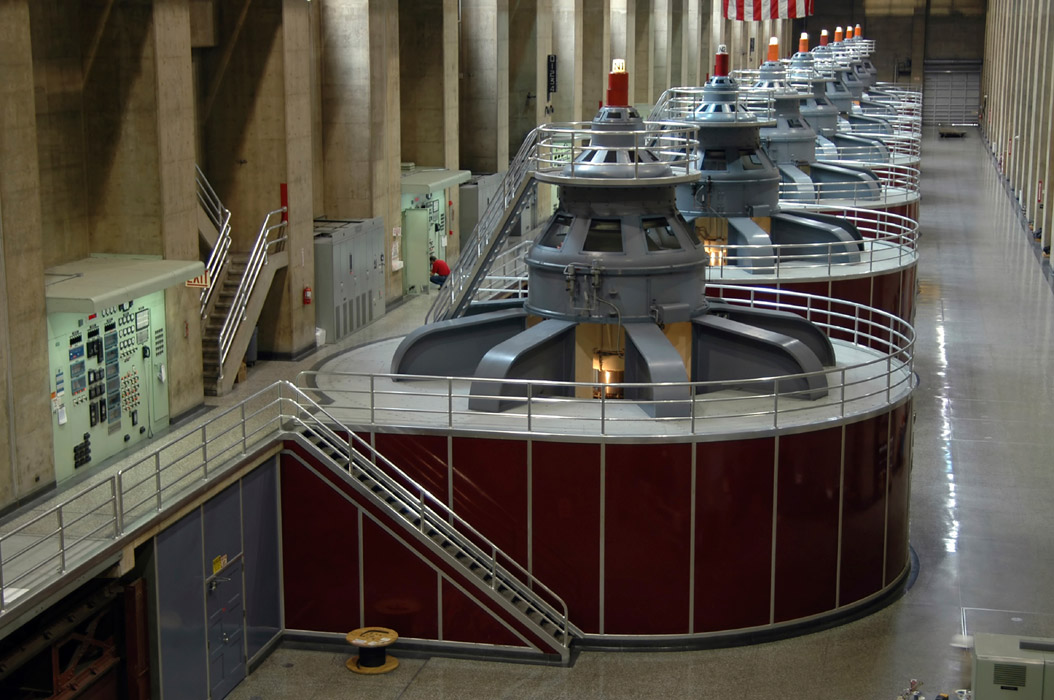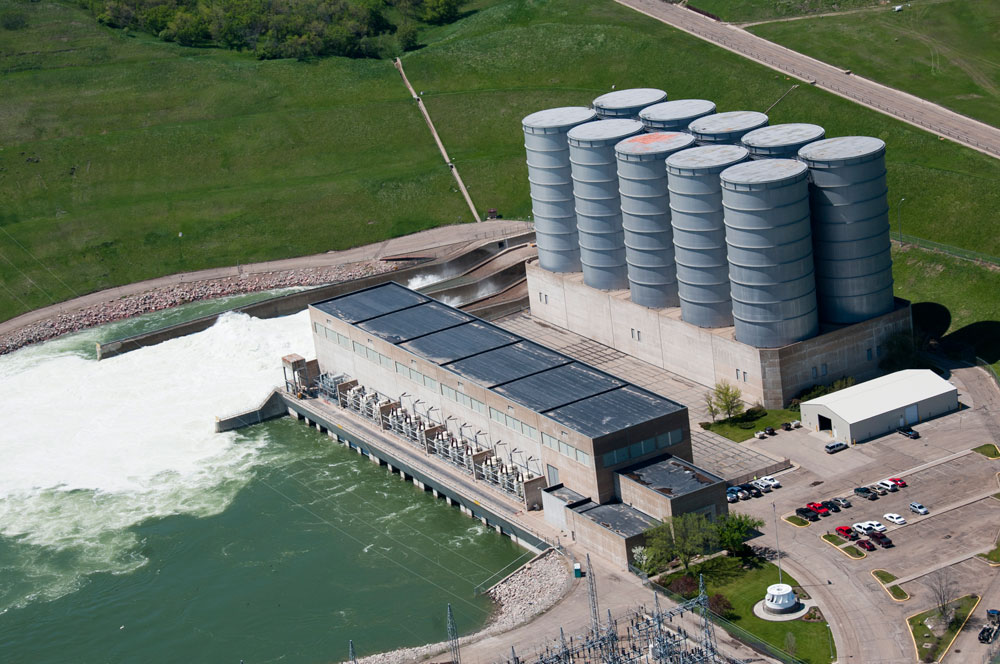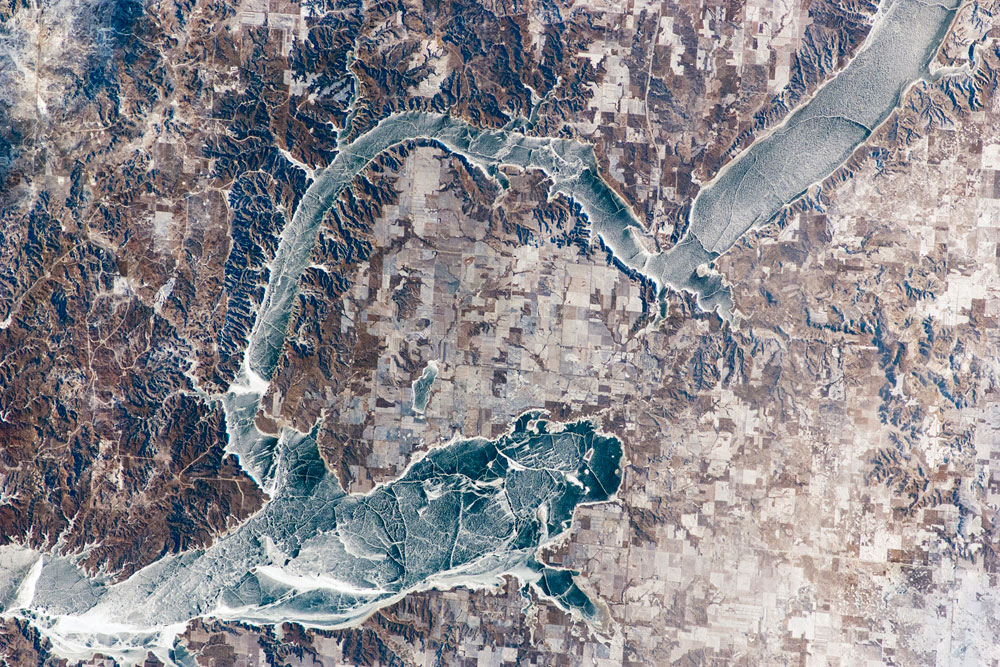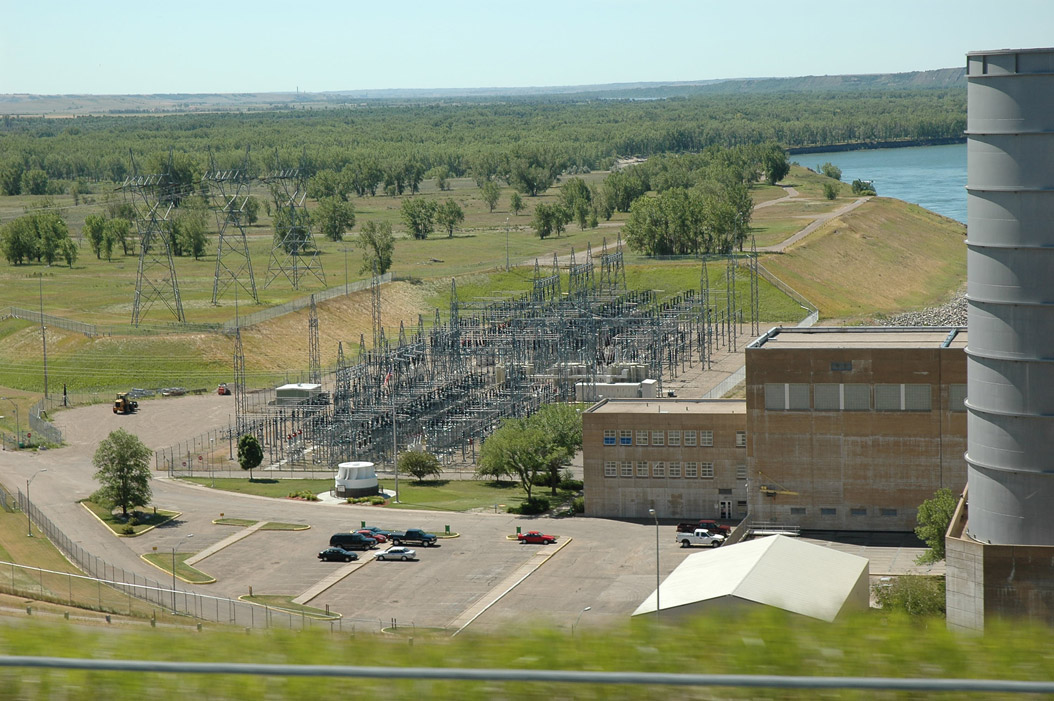What hydropower is:
- Hydropower is power created by changing the energy of moving water into a useful form of energy (hydro = water).
How hydropower is produced:
- As gravity pulls water from a high place to a low place, potential energy is changed to kinetic energy.
- This kinetic energy is changed to mechanical energy (spinning blades of turbine) and then to electrical energy (produced in generator connected to turbine). Visit the Bismarck State College Animation Tool to see how hydropower works.
- If a river has a waterfall, kinetic energy can be produced naturally.
- Due to North Dakota’s fairly flat terrain, natural waterfalls (with the exception of a small one in Ransom County) are nonexistent in the state.
- If a river does not have a waterfall, a dam can be built to create an artificial waterfall.
- An enormous quantity of water can be stored in a reservoir behind a dam.
Garrison Dam is North Dakota’s only hydroelectric dam. Lake Sakakawea is its reservoir.
- Hydroelectric dams are built high in order to create immense water pressure as gravity pulls the water down.
- The water falls with great force through penstocks inside the dam.
Penstocks are huge pipes, inside a dam, that carry water down from a reservoir to water turbines at the bottom of the dam. A water turbine is a device with blades at one end of a shaft and electromagnets on the other end, which generate electricity as the blades spin.

- The water takes on energy as it flows down the penstock and is carried with force to the turbine.
- The force of the falling water causes the turbine blades to spin.
- The turbines are attached to generators, which transform mechanical energy to electricity.
- The water continues past the turbines through the tailraceTailrace is the downstream side of the dam where the water exits the dam. into the river.
- The electricity produced in the generators is carried by transmission lines to the electrical grid.
Hydropower in North Dakota:
- The Garrison Dam is the only producer of hydropower in North Dakota.
- The Garrison Dam has five turbines with a maximum power output of 583 megawatts (MW).
A watt (W) is a unit of power, or the rate at which energy flows. A kilowatt (kW) is 1,000 watts. A megawatt (MW) is 1 million watts.

- The dam produces an average of 2 billion (2, 000,000,000) kilowatt-hours of electricity each year.
- This electricity serves several hundred thousand customers.
- Much of the electricity generated at Garrison Dam is marketed to customers in Minnesota, Iowa, and Nebraska.
A kilowatt-hour (kWh) is a unit for measuring electricity. It is equivalent to 1 kilowatt of power expended for 1 hour. The average home uses about 940 kilowatt-hours of electricity each month.

- The Garrison Dam is the fifth largest earth-filled dam in the world.
- The dam is over 2 miles long and is 210 feet high (only 32 feet shorter than the North Dakota Capitol).
- The reservoir of Garrison Dam is Lake Sakakawea (sah-kah-kah-WE-ah).
Lake Sakakawea Trivia
- Lake Sakakawea is 178 miles long.
- Its width ranges from 1 to 14 miles, with the Van Hook Arm being the widest part of the lake.
- It covers 382,000 surface acres, or 597 square miles.
- It is the largest lake in North Dakota, the 3rd largest man-made lake in the United States, and the 42nd largest in the world.
- The lake depth in the main channel ranges from 70 to 175 feet, with the deepest portion off the face of Garrison Dam.
- The storage capacity of the lake is 23,821,000 acre-feet (one acre-foot is an area about the size of a football field covered by 1 foot of water).
- The extended shoreline of Lake Sakakawea is over 1,500 miles (The distance from Bismarck to New York City is 1,400 miles.)
How hydropower affects the people of North Dakota:

- Hydropower is a renewable and reliable energy resource for the state.
- About five percent of the electric power generated in North Dakota is from the Garrison Dam.
- Job opportunities are available in many fields relating to the hydropower industry in North Dakota.
- Lake Sakakawea, the reservoir of Garrison Dam, also provides opportunities for work.
- Lake Sakakawea is a prime recreation area where people enjoy fishing, camping, and water sports.


